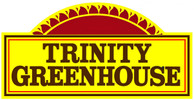Product Overview
A large evergreen tree with a central trunk and dense, ascending, lateral branches from the ground up that form a broad pyramidal to conical crown. It varies from the typical white spruce in its denser, more compact habit and slower growth rate. It has a shallow, fiberous, wide spreading root system. The thin bark is ashy gray or brown, shallowly fissured and separated into thin flaky scales. The needles are individually attached, and foliage color varies from deep green to blue green. The brown cylindrical cones appear in late July and may persist on the tree into January. It is better adapted than the white spruce. It grows best in acidic, moist loams with full sun, but adapts to a variety of conditions including shade, drought, hot and cold. It is flood intolerant and sensitive to soil compaction.
Hardiness Zones
The black hills spruce can be expected to grow in Hardiness Zones 2–6.
Mature Size
The Black Hills spruce grows to a height of 30–60' and a spread of 15–25' at maturity.
Growth Rate
Sun Preference
Full sun and partial shade are best for this tree, meaning it prefers a minimum of four hours of direct, unfiltered sunlight each day.
Soil Preference
The Black Hills spruce grows in acidic, moist, gravelly or sandy loam and fine clay soils. It is drought-tolerant.
This tree:
- Offers a denser, more compact habit than the white spruce.
- Is adapted to cold and is very resistant to winter injury.
- Features dark green to blue-green needles that are somewhat rigid, sharply pointed and roughly ⅓–¾" in length. They are spirally arranged on the branch.
- Yields cylindrical tan cones that are 1–2" long and mature in a single season. They appear in July and may persist through January.
- Requires little pruning.
- Grows in a pyramidal shape.
- Works well as a windbreak/shelterbelt, privacy screen, accent planting, group planting in recreation areas and public grounds and even as a Christmas tree.
- Cannot tolerate flooding and is sensitive to soil compaction.








